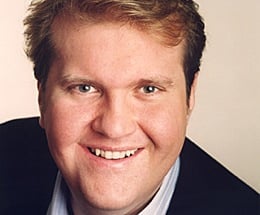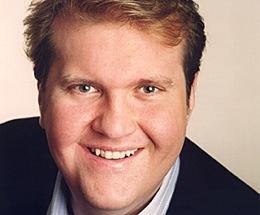
An all-American song program must hold less allure for Bay Area vocal recital addicts than one of German, French, or English rep. How else to explain the too many unfilled seats for the West Coast debut of one of the finest American song cycles in recent or distant memory, Kenneth Frazelle’s Songs in the Rear View Mirror? Sung by tenor Anthony Dean Griffey, whose memorable appearances in San Francisco Opera’s premiere of A Streetcar Named Desire and, most recently, San Francisco Symphony’s stunning performance of Mahler Symphony No. 8 gave strong indication that something special was afoot, the cycle of 10 songs riveted attention with its deeply evocative beauty and wealth of tonal inventiveness.
Frazelle, who attended the performance with his partner of 26 years, introduced the cycle by noting that he has long been fascinated by the photographs, sculpture, and paintings of Alabama native William Christenberry. Christenberry is famed for photographing the changes that have taken place over decades, as time and disregard have altered the architecture and landscape of Hale County, Alabama, the area depicted by James Agee and Walker Evans in Let Us Now Praise Famous Men.
Challenged to find a way to turn photographs of buildings, signs, and fields into an emotionally relevant cycle, Frazelle embarked on a road trip that retraced Christenberry’s journeys. Along the way, memories of his own childhood in North Carolina mixed with images of abandoned barns, the fast-growing kudzu vines that continues to suffocate North Carolina’s native ecology, and Southern evangelism. The lyrics and melodies they inspired, composed specifically for fellow North Carolinians Griffey and pianist Warren Jones, meld an inviting and at times deceptive folk-like simplicity with a sophisticated harmonic vocabulary that goes straight to the heart. Listening to these songs, it became apparent why artists as diverse as Dawn Upshaw, Odetta, Jan DeGaetani, Cassandra Wilson, Bill T. Jones/Arnie Zane, and a trio of stars at the Music@Menlo Festival have gravitated to Frazelle’s music.
Griffey, who debuted the songs at the Reynolda House Museum of American Art in Winston-Salem before taking them to the Kennedy Center, invested Frazelle’s road trip/retrospective diary with touching commitment and gratifying tonal beauty. To Jones’ astoundingly eloquent yet never showy accompaniment, and illustrative photographs occasionally projected behind the performers, he put his heart and soul into the songs.
Not all were serious: the droll Kudzu — “So it’s boohoo for kudzu/ I’ve had enough of you” — found Griffey vamping and camping it up a bit, leaning from side to side and mildly gesticulating as would a lounge singer. Road Signs also brought a surprisingly droll turnaround from Jones, who spent most of the concert with his back to the audience. Nonetheless, the majority of the songs made their greatest impact through quiet scoring. In particular, Green Warehouse, illustrated by an unadorned image presumably shot by Christenberry, and the bareness of “Interior,” with its memories of times long past, benefitted from the duo’s poignant simplicity of utterance.
Other standouts included In the Night, a complex song whose wealth of melodic and rhythmic changes and judicious use of repetition should earn it a place on recital programs, and the stunning final song, A Long Drift. The latter, whose accompaniment varies from spare to almost symphonic, again benefitted from Frazelle’s mastery of repetition and silence. The audience sat still for a very long time before breaking into prolonged applause.
All-American Start
The program began with a dressed down Paul Brown expertly fiddling a North Carolinian arrangement of “Fisher’s Hornpipe.” Brown next brought fiddle and banjo accompaniment to Griffey’s renditions of four traditional songs. Despite the tenor’s tux, carefully placed accents, and country boy made good pronunciation, the sincerity of his delivery and sheer beauty of voice transcended surface effects.
A second set of songs, replacing three songs by Griffes, followed. As impossible as it was to pretend that the wealth of shading and textual emphasis that Griffey brought to Bernstein’s Simple Song and the Shaker melody Simple Gifts evoked simplicity, his honesty and Jones’ pianistic directness said even more. There is also a lot to be said for renditions of Copland’s arrangements of The Dodger and The Boatman’s Dance that eschewed the phony folkiness that Thomas Hampson brought to them in his recent American program. By the time Jones had completed his marvelous rendition of Griffe’s Barcarolle, the stage was set for the more classical contrast of two songs from Barber’s Op. 10 and Frazelle’s exquisite cycle.
Griffey and Jones’ sole encore, This Little Light of Mine, served as a moving summation of the art that conceals art. Simply delivered, with a melody that differed significantly from the spirited rendition that accompanied many of the early Freedom Rides and marches, the duo moved beyond politics to evoke to the beauty and resilience of spirit that continue to motivate many in the Southland. It was a very special evening.

